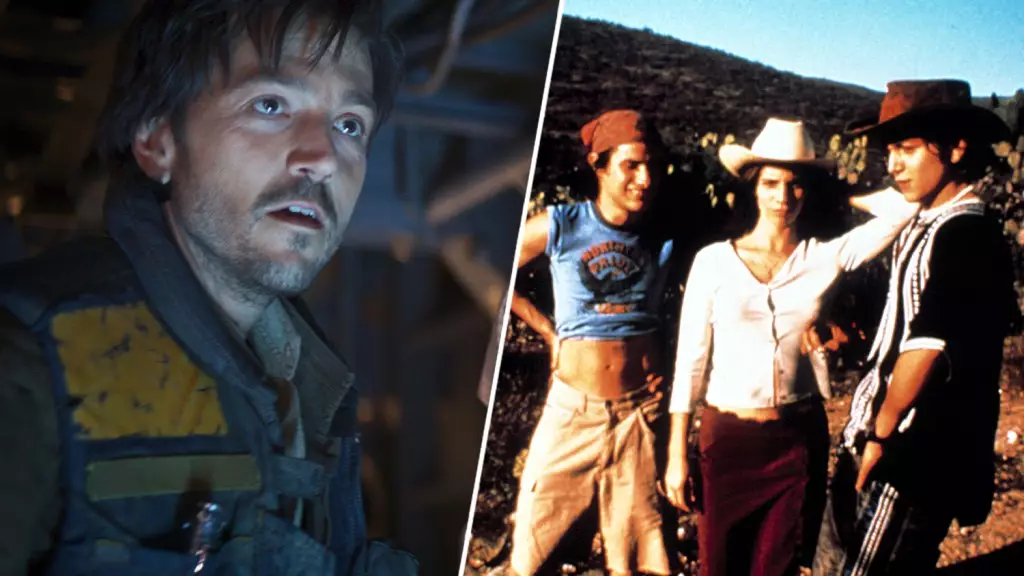In a world where the cinematic universe of ‘Star Wars’ reigns supreme, it’s fascinating to discover the unexpected influence of Alfonso Cuarón, a master of storytelling who specializes in weaving raw, human experiences. Diego Luna, the celebrated lead of ‘Andor,’ recently recounted an illuminating moment from early discussions surrounding ‘Rogue One: A Star Wars Story.’ Cuarón’s somehow unintentional yet profound impact on the trajectory of ‘Star Wars’ reveals not merely a blending of genres but rather a bold assertion that storytelling need not be confined to tired tropes of heroism.
During a conversation with Vanity Fair, Luna reflects on stepping from the indie film realm into the expansive Disney cosmos. His journey, rooted in childhood admiration for ‘Star Wars,’ transformed dramatically when Gareth Edwards, the director of ‘Rogue One,’ approached him with a vision. Rather than envisioning a typical space opera, Edwards emphasized a narrative torn straight from the fabric of reality—a stark contrast to the often grandiose tales traditionally told in the franchise. He aspired for a raw, almost documentary-like cadence, reminiscent of Cuarón’s hit film, ‘Y Tu Mamá También.’
Improv as a Tool for Authenticity
One of the more daring aspects of this envisioned film was the prospect of improvisation. The Hollywood formula often demands meticulously scripted lines, rendering performances somewhat mechanical. However, Edwards sought a different approach, urging actors to seize their roles truly, allowing them the freedom to manipulate character dynamics organically. This desire points towards a significant ideological shift—one that prioritizes authenticity over polished performance. In an age where blockbusters are often criticized for lacking depth, this improv-centered strategy might just be a way to reinvigorate a franchise in dire need of revitalization.
It’s compelling to consider how Luna’s recollections of a childhood steeped in ‘Star Wars’ fantasy evolved as he embraced this alternative filmmaking style. The playful embrace of the “dark side” metaphorically echoes the importance of complexity in characters and narratives—an essence that ‘Andor’ meticulously captures.
Breaking Down Boundaries with Narrative Exploration
Cuarón’s influence doesn’t merely suggest a merger of cinematic styles but challenges the very perception of what a ‘Star Wars’ narrative can be. This is a universe where moral ambiguities thrive, lending a voice to stories that matter—stories that resonate on a human level, where clandestine operations and personal struggles intertwine. The risk taken by filmmakers like Edwards and Luna exemplifies a commitment to depth, moving away from black-and-white characterizations typically enforced in mainstream media.
As Luna steps back into his role as Cassian Andor in the upcoming ‘Andor’ series, listeners can anticipate a sensory experience stemming from this artistic ambition. The earlier films had generated a sense of admiration among fans, yet the creative liberties infused into projects like ‘Rogue One’ pave the way for a fresh wave of storytelling that can transcend its space opera roots. With a meticulous focus on character-driven narratives, the creators at the helm are poised to redefine the essence of this beloved franchise.
The alliance drawn between the rich, personal storytelling akin to Cuarón’s visions and the sweeping universe of ‘Star Wars’ cultivates an exciting dialogue on the evolution of cinematic storytelling. Throughout this shift, we see a blueprint, not merely for a blockbuster film series, but for a cultural phenomenon that encourages filmmakers to venture beyond traditional narratives, fostering an environment ripe for exploration and nuance.


Leave a Reply